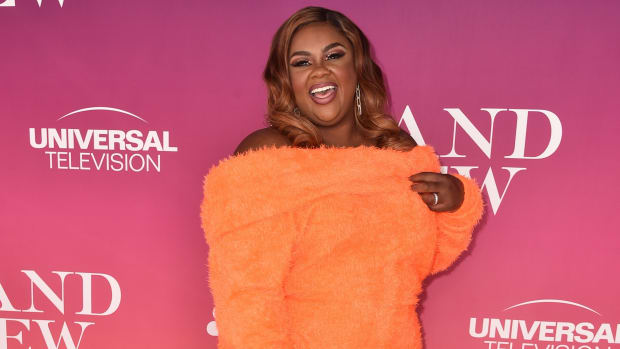"Sustainability" has been one of the biggest — if not the biggest — buzzwords in the beauty industry for years. Efforts and entire marketing campaigns focused on refillable, recyclable and post-consumer
recycled packaging, "clean" formulating, microplastics, carbon footprints, water waste, energy efficiency, supplier transparency and so forth have become abundant and commonplace. And all of these topics are important when it comes to answering consumers' calls for beauty products that create less waste. But there's also a less-discussed subject of arguably equal importance that some say is the new frontier of the sustainable beauty movement: biodiversity.
"Biodiversity is the variety of plants, animals and other living creatures on earth. We all rely on nature for the raw materials we need to sustain healthy lives. By caring for biodiversity, we're caring for ourselves," explains Lara Koritzke, communications and marketing director at the Union for Ethical BioTrade (UEBT), a nonprofit association that "promotes sourcing with respect" for corporations and makers of consumer goods.
While it's common for beauty brands to discuss the hero ingredients in their products and even sometimes cite the origins of said ingredients, attention to the biodiversity of the regions where they're doing their sourcing has fallen by the wayside. This is where the UEBT comes into play, to encourage brands to consider less harmful practices and even instate processes that invest in the long-term health and viability of an ecosystem, local environment and community as a whole.
"If a company is sourcing an ingredient, such as a flower, plant or root, from a farm that's following practices that reduce agrochemicals and/or promote beneficial insects, this is good for the local environment and the surrounding communities," explains Koritzke. "Those farms might see lower levels of chemical residue in waterways that provide drinking water to local communities, or they may see plants bear more fruit from the effective pollination."
Ultimately, the UEBT is looking out for companies and consumers who want to be a part of the solution rather than a part of the problem.
"Brands that are part of UEBT are working to give people a positive choice of products that respect biodiversity," Koritzke notes. "This means they're sourcing their ingredients from biodiversity in ways that respect the local ecosystems and local communities where these materials are collected or grown."
One beauty brand leading the charge in ingredient sourcing with biodiversity in mind is Fresh. The LVMH-backed skin-care brand launched its White Truffle Crème Ancienne White Truffle Overnight Mask — a luxurious (and pricey, at $385 a pop) skin-firming treatment meant to be worn while sleeping — last fall. To develop the formula and source the prized white truffle, Fresh partnered with the UEBT and Save the Truffle, a local nonprofit organization based in Alba, Italy. The latter's mission is to educate the public on the traditions surrounding truffle cultivation and foraging, as well as take efforts to preserve the environment in the region, where most of the world's white truffles come from (not to mention hazelnuts and really good wine).
With Save the Truffle, Fresh is educating consumers about how rare this ingredient is — white truffles can only be cultivated under a strict set of environmental circumstances, but not farmed or grown — and putting funds toward reforestation in the area to help promote such conditions and ensure its longevity. In doing so, it's not only mitigating its own environmental impact, it's also taking steps toward investing in the future of the truffle hunting industry, natural ecosystem and human population in the area.
In beauty and beyond, biodiversity is set to become a crucial focus in 2022, Koritzke predicts, especially with the upcoming formalization of the Global Biodiversity Agreement, and its adoption by nations across the globe.
"This agreement is similar to the Paris Agreement for Climate Change, but focused specifically on biodiversity," she explains. "With this agreement, we expect more and more businesses are going to need to be more transparent in their actions and show clear action toward protection."
Working with the UEBT is one way for businesses to clarify their biodiversity efforts — but not just any company can pay to get its stamp of approval.
"To become a member of UEBT, a company must first demonstrate that it meets the requirements, that it wants to source from a specific part of the world in a responsible way, give an idea of its supply chain and, finally, establish objectives," says Koritzke. "If a company is ready to commit to these requirements, it will automatically influence how they develop products in the future since they will be looking through a sustainably-conscience lens. Once you make the commitment to protect and preserve biodiversity, it changes how you function and act as a company."
Recommended Articles
While Fresh isn't the only brand the UEBT works with — it also counts Givenchy Parfums, Christian Dior Parfums and Natura Brazil among its members — it's one of the first to take major action within the realm of biodiversity and speak about it so publicly. Until recently, most communication from beauty brands around sustainability has focused on things like packaging and recycling.
"This is very important, but what they may be missing is the on-the-ground impacts of their sourcing of the raw materials," explains Koritzke. "In general, a lot of companies find it easier to focus on the later parts of the process, and this is understandable — there are clear positive steps that can be made in how you work with manufacturers or how you choose the packaging materials for products — but at the production level, where everything starts, there are significant improvements that can be made for water, for soil and for the local climate. These are the improvements that can affect local people and important ecosystems, so working to make those improvements at the source, in the farms or wild growing areas for plants and other raw materials, and investing in local communities, can really create positive changes for people and biodiversity."
Beyond its own commitments, Fresh also hopes to bring attention to the concept of biodiversity in the beauty industry as a whole.
"Many beauty brands work to use 'sustainable' packaging and materials, but don't focus as heavily on working to ensure that the communities where their ingredients come from are being maintained and preserved in a way that promotes biodiversity," Tennille Kopiasz, Fresh's global chief marketing officer, tells Fashionista. "Our work with these initiatives is extremely important, and we hope to inspire other companies to make the same changes and work to become more sustainable and biodiversity-friendly."
LVMH has held a majority stake in the brand since 2000, and with plenty of other beauty brands under its umbrella (Guerlain, Benefit, Make Up For Ever, Maison Francis Kurkdjian and the Kendo slate of brands, such as Fenty Beauty, Ole Henriksen and Bite), there's certainly room for this biodiversity-prioritizing ethos to expand across its portfolio.
"We feel very proud to have been the first LVMH brand to become a member of UEBT and to bring them to the group. We hope our work with UEBT inspires many beauty brands to commit to rethink their practices and join us in creating a more sustainable future," notes Kopiasz.
Koritzke agrees that this is a promising area of focus that's rife with opportunity for beauty: "We do surveys of consumers every year and we see that awareness of biodiversity is rising and that consumers are expecting brands to protect it. However, they also have a low level of trust that brands are actually respecting nature in their sourcing practices, so there's real opportunity for brands to be more transparent and show clear actions."
At the end of the day, these companies have to make money and create value for their shareholders, and if consumers are demanding that they provide more transparency or deepen their sustainability commitments, they have no choice but to do so, especially if their competitors are already are.
"Industry-wide, we're all seeing customers that are better informed about sustainability practices and expect transparency from the brands they support. That expectation will only continue to grow in the future," notes Kopiasz.
In other words, consumers have a voice when it comes to calling upon brands to seek actionable ways to fight climate change and prioritize a mindful approach to environmental impact. And not only is it being heard — it's also setting the bar higher for brands across the industry, upping the ante for what it actually means to be a "sustainable" brand.
Disclosure: Fresh paid for my travel and accommodations to visit Alba and get a firsthand look at how white truffles are cultivated and foraged in the region. The brand also coordinated access to representatives from UEBT for the interviews included above.
Please note: Occasionally, we use affiliate links on our site. This in no way affects our editorial decision-making.
Never miss the latest fashion industry news. Sign up for the Fashionista daily newsletter.






